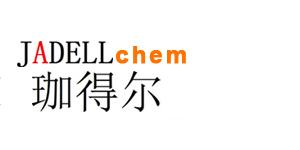Recombinant Human PD-L2, Fc Chimera (HEK293-expressed) 是 PD-1 的另一个配体,和PD-1相互作用,负调控T细胞增殖,细胞因子的产生和细胞毒性。
Synonyms
rHuPD-L2, Fc Chimera; Programmed cell death 1 ligand 2; B7DC; CD273 ; 重组人 PD-L2,Fc 嵌合体 (HEK293 表达)
Species
HumanSource
HEK 293 Accession
Q9BQ51 Gene ID
80380 Molecular Weight
Approximately 75 kDa AA Sequence
LFTVTVPKEL YIIEHGSNVT LECNFDTGSH VNLGAITASL QKVENDTSPH RERATLLEEQ LPLGKASFHI PQVQVRDEGQ YQCIIIYGVA WDYKYLTLKV KASYRKINTH ILKVPETDEV ELTCQATGYP LAEVSWPNVS VPANTSHSRT PEGLYQVTSV LRLKPPPGRN FSCVFWNTHV RELTLASIDL QSQMEPRTHP Biological Activity
5 µg/mL (100 µL/well) of immoblized recombinant human PD-L2-Fc can bind human Biotin-PD-1-Fc with a linear range of 2.44-39.06 ng/mL. Appearance
Lyophilized powder. Formulation
Lyophilized after extensive dialysis against PBS, 5% trehalose and mannitol. Endotoxin Level
<0.2 EU/μg, determined by LAL method. Reconstitution
Reconstitute the lyophilized recombinant Human PD-L2, Fc Chimera (HEK293-expressed) (rHuPD-L2, Fc Chimera) to 100 µg/mL using ddH2O or diluted with PBS. Storage & Stability
Lyophilized recombinant Human PD-L2, Fc Chimera (HEK293-expressed) (rHuPD-L2, Fc Chimera) is stored at -20°C. After reconstitution, it is stable at 4°C for 1 week or -20°C for longer. It is recommended to freeze aliquots at -20°C or -80°C for extended storage. Shipping
Room temperature in continental US; may vary elsewhere. Background
Programmed death I (PD-I)-deficient mice develop a variety of autoimmune-like diseases, which suggests that this immunoinhibitory receptor plays an important role in tolerance. PD-1 ligand 2 (PD-L2) is a second ligand for PD-1. Engagement of PD-1 by PD-L2 dramatically inhibits T cell receptor (TCR)-mediated proliferation and cytokine production by CD4+ T cells. At low antigen concentrations, PD-L2-PD-1 interactions inhibit strong B7-CD28 signals. In contrast, at high antigen concentrations, PD-L2-PD-1 interactions reduce cytokine production but do not inhibit T cell proliferation. PD-L-PD-1 interactions lead to cell cycle arrest in G0/G1 but do not increase cell death. In addition, ligation of PD-1 + TCR leads to rapid phosphorylation of SHP-2, as compared to TCR ligation alone[1]. |



